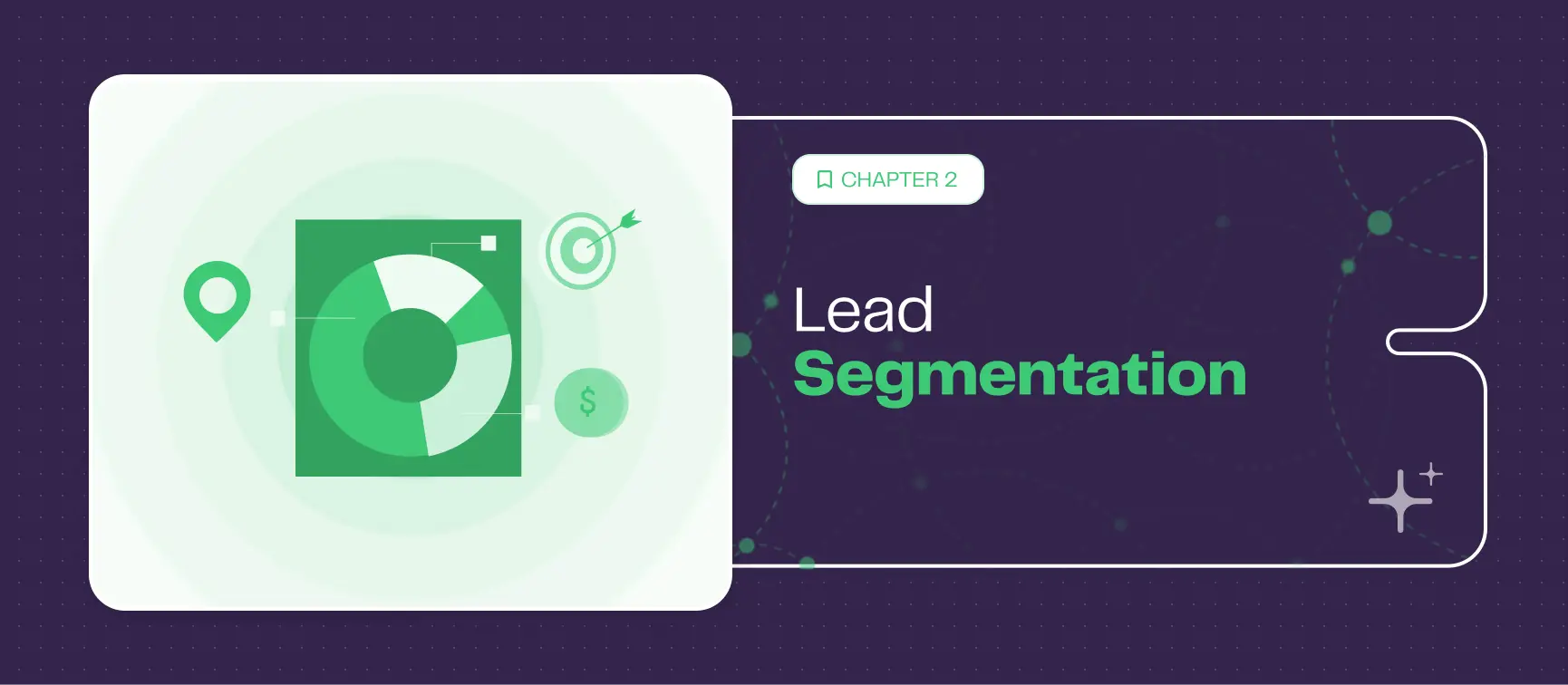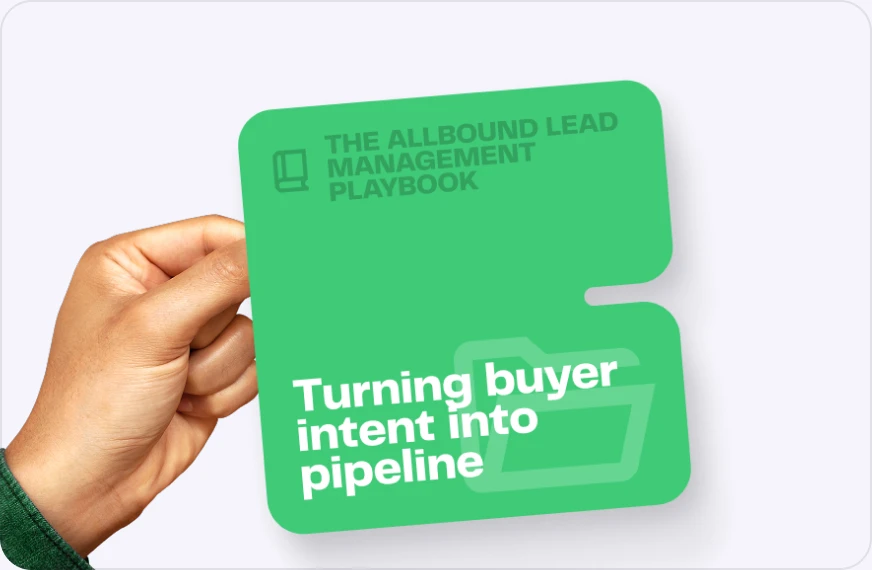
“Spray and pray” isn’t a strategy—it’s a shortcut to irrelevance. In today’s B2B environment, attention is a limited resource. You’re not just competing with direct competitors; you’re competing with every email, every Slack ping, and every LinkedIn post your lead sees.
So when your outreach doesn’t work, the problem isn’t necessarily your product or pitch. It’s your targeting.
If you treat every lead the same way, you ignore what makes B2B buyers engage: relevance.
That’s where segmentation comes in. It’s not a nice-to-have or a post-funnel optimization—it’s the foundation of a scalable, personalized, high-converting prospecting strategy.
What is lead segmentation?
Lead segmentation means dividing your target market into smaller, more actionable groups based on shared characteristics or behaviors, instead of sending the same message to a thousand people.
These groups can be based on firmographics (company size, industry), demographics (job titles, seniority), technographics (tools they use), or even intent (what they’ve done recently).
What segmentation is not:
- It’s not just filtering by job title
- It’s not labeling accounts as “enterprise” vs. “SMB” and calling it a day
- It’s not doing mass outreach and hoping a few will bite
Segmentation is about relevance at scale.
Done right, segmentation gives you:
- More precision: speak to actual needs instead of guessing
- More relevance: your outreach resonates, your leads feel understood
- More results: fewer ignored emails, more booked calls
The formula is simple:
Smaller groups = more relevance = better reply rates.
The two layers of segmentation: classic ABM + real-time intent
The most effective segmentation strategies combine Account-Based Marketing (ABM) principles with real-time intent signals.
ABM segmentation: the foundation
ABM segmentation is the foundation. It’s about identifying who could be a great customer based on:
You can segment based on:
- Firmographics: industry, company size, revenue
- Geography: region, country, time zone
- Tech stack: tools they already use (think HubSpot, Salesforce, etc.)
- Pain points or goals: inferred through job titles or industry shifts
You can do all this natively in LGM Database, using advanced filters and Lookalike Search to find companies that resemble your best customers.
But ABM has a limit. It tells you who to reach, not when or why. That’s where intent comes in.
Intent-based segmentation: the game changer
That means tracking:
- What content are they consuming
- What events or webinars do they attend
- What keywords do they search for
- What tools are they evaluating
- What pain points do they react to on social
It’s digital body language, telling you when a lead is warming up before they fill out a form.
Example: LinkedIn’s “Hiring” banner → tailor a clear hook to personalize your outreach.
The Buska–Clay–La Growth Machine ecosystem provides an automated, end-to-end workflow:
- Buska detects intent signals using relevant keywords
- Clay those profiles and creates personalized openers with AI
- La Growth Machine runs high-personalization, multichannel campaigns based on Intent Data
Deep dive: Two intent-based segmentation plays that work
Segment by product complementarity
You’re not starting from scratch. You’re adding value to something they already use.
This works across industries:
- Camera accessories: A lens or filter brand targets people recently bought a DSLR or mirrorless camera →These people are likely shopping for add-ons.
- Online payment solutions: A payment provider contacts Shopify or WooCommerce users → payment needs are already on the table.
- Wellness products: A supplement brand targets people using fitness or nutrition tracking apps → they’re already invested in their health.
Why it works: your offer feels relevant from the first touch, because it is.
Segment by competitive frustration
Target users of competitor tools, especially if those tools leave gaps.
For example, if you’re selling project management software:
- Competitor A = feature-packed but clunky
- Competitor B = simple but too limited
- Competitor C = premium but too expensive
If your tool hits the sweet spot in UX, features, and price, that’s your pitch.
How to play it:
- Mention pain points that prospects already know
- Use review snippets or G2 quotes to support your pitch
- Offer easy switching paths or personalized demos
Don’t forget channel fit: the multichannel multiplier
Even with perfect segmentation, your outreach can flop if you hit the wrong channel.
Example:
- Cold lead? Hit them on LinkedIn with value-first content
- Warm lead? Go directly via email with a specific CTA
- Quiet lead? Retarget with ads or follow up via video or voice
Allbound = multichannel by design. And the best segmentation doesn’t just tell you what to say—it guides how and where you say it.
LGM Database: The perfect tool for segmenting your leads
LGM Database brings your segmentation strategy to life, combining ABM precision with real-time intent.
What you get:
- Advanced filters: segment by industry, company size, tech stack, and more
- Live enrichment: always up-to-date contact info, GDPR-compliant
- Intent data: identify hot leads by behavior, not just firmographics
- Lookalike Search: find new companies that resemble your best customers
Takeaways
Segmenting your leads isn’t just a tactical move—it’s a strategic advantage. It’s the difference between showing up with a relevant, timely message… and being another ignored email in a crowded inbox.
Start by identifying fit with ABM filters. Then add intent to know when to strike. Align your sales and marketing teams around shared segments. Automate where it makes sense, and personalize where it matters.
Because when you combine segmentation with great messaging and multichannel execution, you get:
- Fewer wasted touchpoints
- Higher reply rates
- More meaningful conversations
- A pipeline full of the right prospects
Relevance wins. Always.
Less noise. More replies. Smarter prospecting—at scale.

